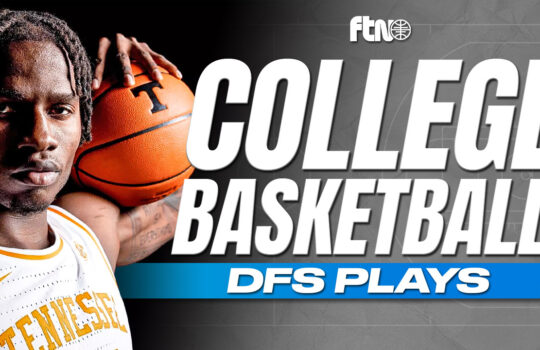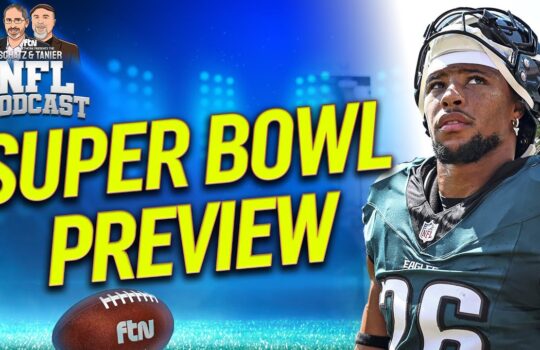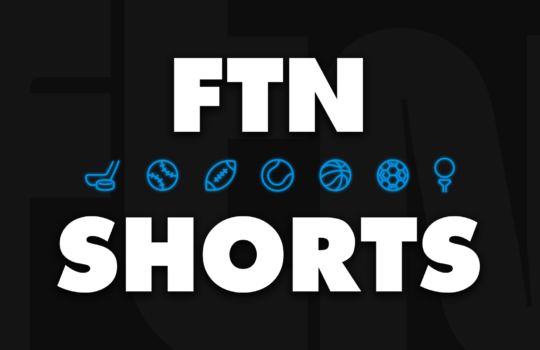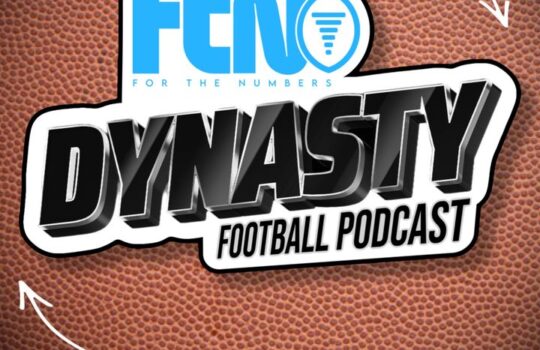
Each week, I’ll review my single-entry DFS lineup, as well as a couple others. I will also track my success rates throughout the season. The criteria for the other lineups to make the article (and tracking) will be over 10% of my overall investment. This week, that included:
- My single-entry
The goal here is to hold myself accountable for the decisions I make while also helping to provide a blueprint for long term success in GPPs.
Throughout the year, I’ll emphasize the top 10% and top 1% hit rates. While profit/loss is at the mercy of significant variance at the top of tournaments, these hit rates stabilize much faster and can therefore paint a stronger picture of our performance. My cash rate is now quite strong, but it hasn’t resulted in any major hits. Hopefully the positive variance is on its way!
The Single-Entry
Rather than go through my usual evaluation of the process of each aspect of my lineup, let’s continue the discussion stemming from my Predicting NFL DFS Performance piece. In particular, I’d like to discuss the “movement” of ownership and how it relates to performance — from last week’s SE Review:
“Since the thesis is that the industry is great at forecasting WRs, perhaps early-week ownership projections are as predictive or even more predictive of success than actual ownership, which is more affected by roster construction priorities. I’ll look into this more.”
Here are the top five receivers in “negative movement,” meaning they ended up less popular than expected:
Now, the receivers with the largest “positive movement”:
Well, how interesting is this! This is obviously just a two-week sample and could therefore be total noise, but there definitely seems to be a pattern here. So, what might the phenomenon be?
The first relates to the bias of ownership projections themselves. In other words, “negative movement” could simply be the industry under-estimating the strength of the play while ownership projections did not. This isn’t too useful to us, however, since there would be no way to anticipate which players would come in below projections if this were all that was occurring.
The next one relates to a saying I love — “first thought, best thought.” Our initial impressions are strong and accurate, and then we overthink (this is an oversimplification, but the point remains). In other words, ownership projections reflect the sentiment of the industry about certain players more than actual ownership does. Actual ownership can move drastically based on roster construction priorities. For example, why did Diontae Johnson end up more than twice as popular as Stefon Diggs? Probably because Gabriel Davis was mega-chalk and people didn’t want two Buffalo receivers outside of a Josh Allen stack. Now this is actionable. This is something we can potentially predict.
Why did Brandin Cooks come in lower than expected? Likely because the James Robinson love made people too confident in Jacksonville as a whole (speaking to myself here!). For example, I thought I was so sneaky with the Marvin Jones play, but Jones ended up slightly more popular than Cooks! If I had anticipated the possibility of that movement, Cooks over Jones would have been an incredibly easy decision.
There’s real potential here, friends.
Takeaways
To be clear, I am not saying that we should expect negative movement receivers to consistently outperform positive movement players. Instead, I’m saying that this positive movement is largely inefficient and something we can take advantage of if we can anticipate it.
Saturday night or Sunday morning, I’ll drop some notes into the Discord, speculating about the kind of movement we could see, and the positions we may want to take in order to capitalize on it.

















































 New York Jets
New York Jets  New England Patriots
New England Patriots  Miami Dolphins
Miami Dolphins  Buffalo Bills
Buffalo Bills  Pittsburgh Steelers
Pittsburgh Steelers  Cleveland Browns
Cleveland Browns  Cincinnati Bengals
Cincinnati Bengals  Baltimore Ravens
Baltimore Ravens  Tennessee Titans
Tennessee Titans  Jacksonville Jaguars
Jacksonville Jaguars  Indianapolis Colts
Indianapolis Colts  Houston Texans
Houston Texans  Las Vegas Raiders
Las Vegas Raiders  Los Angeles Chargers
Los Angeles Chargers  Kansas City Chiefs
Kansas City Chiefs  Denver Broncos
Denver Broncos  Washington Commanders
Washington Commanders  Philadelphia Eagles
Philadelphia Eagles  New York Giants
New York Giants  Dallas Cowboys
Dallas Cowboys  Minnesota Vikings
Minnesota Vikings  Green Bay Packers
Green Bay Packers  Detroit Lions
Detroit Lions  Chicago Bears
Chicago Bears  Tampa Bay Buccaneers
Tampa Bay Buccaneers  New Orleans Saints
New Orleans Saints  Carolina Panthers
Carolina Panthers  Atlanta Falcons
Atlanta Falcons  San Francisco 49ers
San Francisco 49ers  Seattle Seahawks
Seattle Seahawks  Los Angeles Rams
Los Angeles Rams  Arizona Cardinals
Arizona Cardinals 





 Boston Celtics
Boston Celtics  Brooklyn Nets
Brooklyn Nets  Philadelphia 76ers
Philadelphia 76ers  New York Knicks
New York Knicks  Toronto Raptors
Toronto Raptors  Chicago Bulls
Chicago Bulls  Detroit Pistons
Detroit Pistons  Milwaukee Bucks
Milwaukee Bucks  Cleveland Cavaliers
Cleveland Cavaliers  Indiana Pacers
Indiana Pacers  Orlando Magic
Orlando Magic  Atlanta Hawks
Atlanta Hawks  Charlotte Hornets
Charlotte Hornets  Miami Heat
Miami Heat  Washington Wizards
Washington Wizards  Denver Nuggets
Denver Nuggets  Minnesota Timberwolves
Minnesota Timberwolves  Oklahoma City Thunder
Oklahoma City Thunder  Portland Trail Blazers
Portland Trail Blazers  Utah Jazz
Utah Jazz  LA Clippers
LA Clippers  Golden State Warriors
Golden State Warriors  Los Angeles Lakers
Los Angeles Lakers  Phoenix Suns
Phoenix Suns  Sacramento Kings
Sacramento Kings  Dallas Mavericks
Dallas Mavericks  Houston Rockets
Houston Rockets  Memphis Grizzlies
Memphis Grizzlies  New Orleans Pelicans
New Orleans Pelicans  San Antonio Spurs
San Antonio Spurs 










